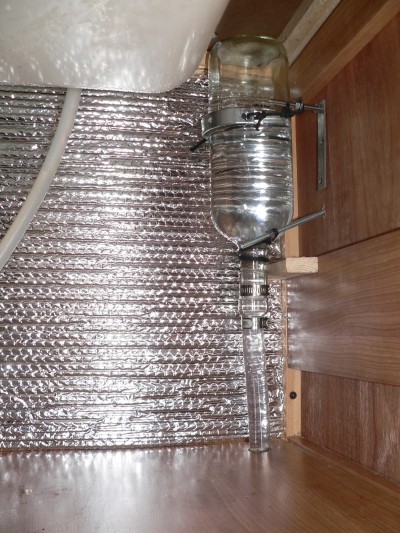
| RV Accumulators |

|
Reasons for an Accumulator:
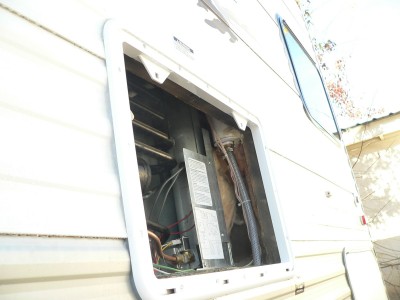
|
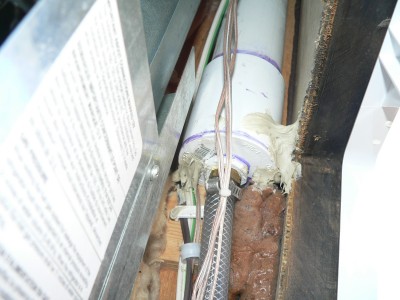 Looking vertically up...
Looking vertically up...
|

Absorbed gasses... |
|
This is what the ancients were commended for. By faith we understand that the universe was formed at God's command, so that what is seen was not made out of what was visible. Hebrews 11 |

|
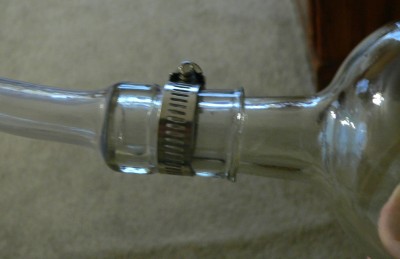
|

|
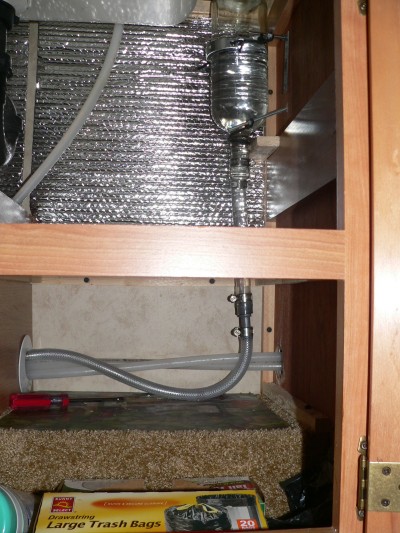
|

|

|

|
 The accumulators, the glass bottle and the ABS pipe, hold one gallon of water.
To get this measurement, have the pump deliver its normal 30 lbs, and after it stops turn the power off so that the pump will not automatically come on.
The water level will be approximately 2/3 full in the glass accumulator and approximately 2/3 full in the pipe accumulator.
Use a tap at a sink to fill a container, and see how munch water is stored under pressure.
Fill the container untill no more water comes out of the tap. At the same time the gauge will read zero.
The accumulators, the glass bottle and the ABS pipe, hold one gallon of water.
To get this measurement, have the pump deliver its normal 30 lbs, and after it stops turn the power off so that the pump will not automatically come on.
The water level will be approximately 2/3 full in the glass accumulator and approximately 2/3 full in the pipe accumulator.
Use a tap at a sink to fill a container, and see how munch water is stored under pressure.
Fill the container untill no more water comes out of the tap. At the same time the gauge will read zero.
 In practice for these initial settings, the pump cycles between 30 lbs and 23 lbs.
In practice for these initial settings, the pump cycles between 30 lbs and 23 lbs. So you get a gallon available and completely drained,
and only .3 liter under pressure.
So you get a gallon available and completely drained,
and only .3 liter under pressure.

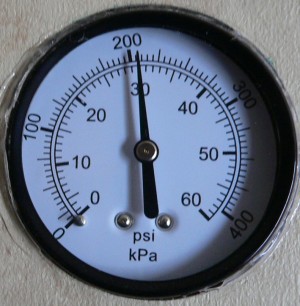
|
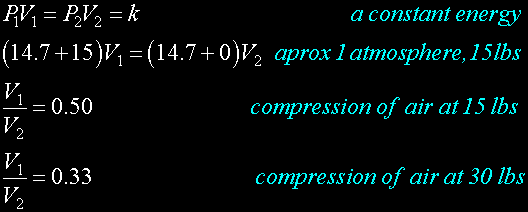

|
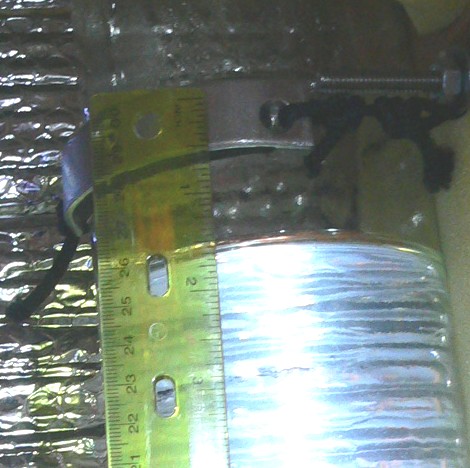
|

|
 Just making things prettier...
Just making things prettier... Reinstalled the soap dispenser; the round cylinder thing to the left of the bottle.
Reinstalled the soap dispenser; the round cylinder thing to the left of the bottle.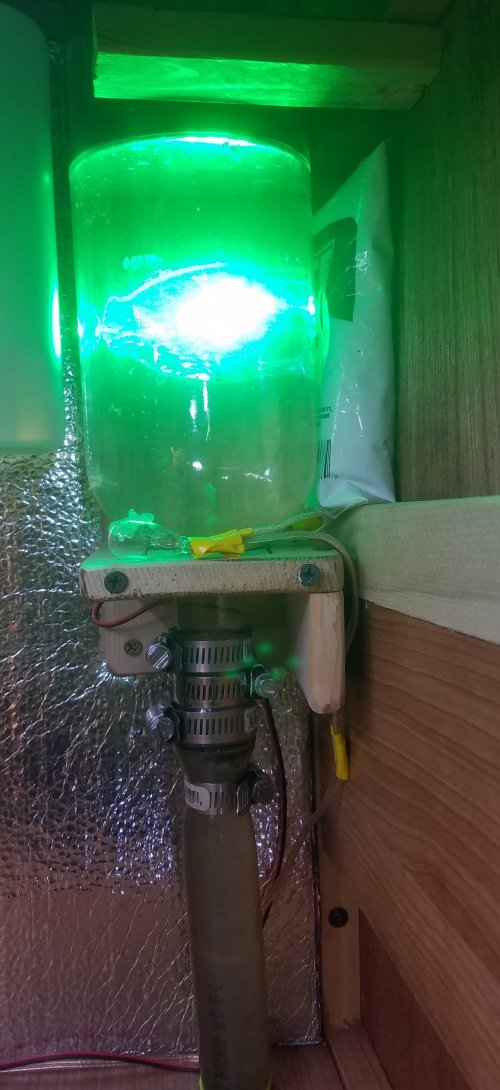 Added a couple of clamps...
Added a couple of clamps...
 Here I am beginning to assemble a viewing accumulator.
...I guess that is what it could be called.
Here I am beginning to assemble a viewing accumulator.
...I guess that is what it could be called.|
An artist's only concern is to shoot for some kind of perfection, and on his own terms, not anyone else's.
J. D. Salinger |
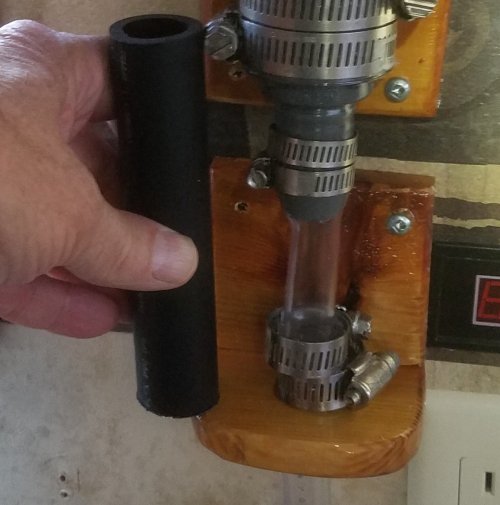 But before I could apply full pressure, the bottom connection began to leak.
This connection was dubious from the start.
I had to get down to a 1/2 inch ID from 1.25 ID. No one makes such an adaptor.
The best that can be done is to adapt 1.25 down to 3/4 ID. And that I did.
So, I thought I would warm 1/2 clear vinyl, non reinforced, and then force it over the 3/4. It was easy to do.
And it does not leak until hose clamps are tightened.
The vinyl is so thin that a hose clamp pinches the vinyl.
It does not leak without the clamps, but of course an unsecured connection can not be trusted.
I even tried more narrow clamps, I just slid down the original clamps out of the way in the picture.
If it was going to work, it would work with the narrow clamps.
No work...
But before I could apply full pressure, the bottom connection began to leak.
This connection was dubious from the start.
I had to get down to a 1/2 inch ID from 1.25 ID. No one makes such an adaptor.
The best that can be done is to adapt 1.25 down to 3/4 ID. And that I did.
So, I thought I would warm 1/2 clear vinyl, non reinforced, and then force it over the 3/4. It was easy to do.
And it does not leak until hose clamps are tightened.
The vinyl is so thin that a hose clamp pinches the vinyl.
It does not leak without the clamps, but of course an unsecured connection can not be trusted.
I even tried more narrow clamps, I just slid down the original clamps out of the way in the picture.
If it was going to work, it would work with the narrow clamps.
No work... 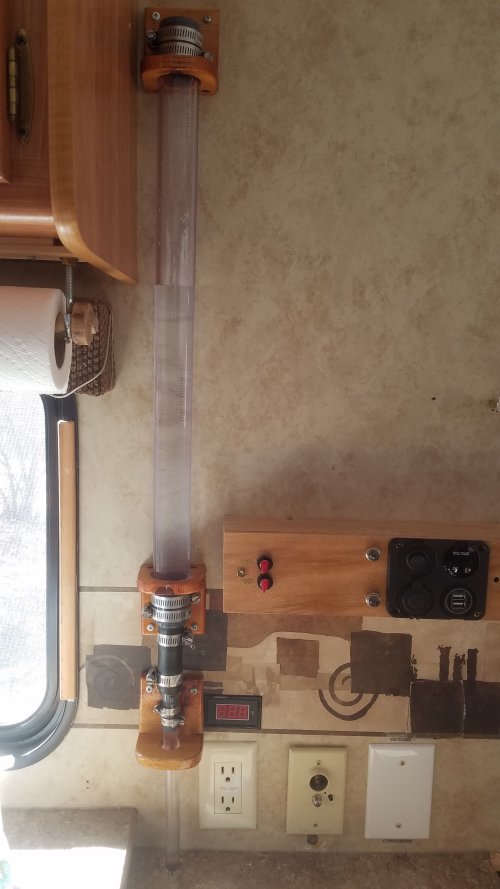 After the install...
After the install...
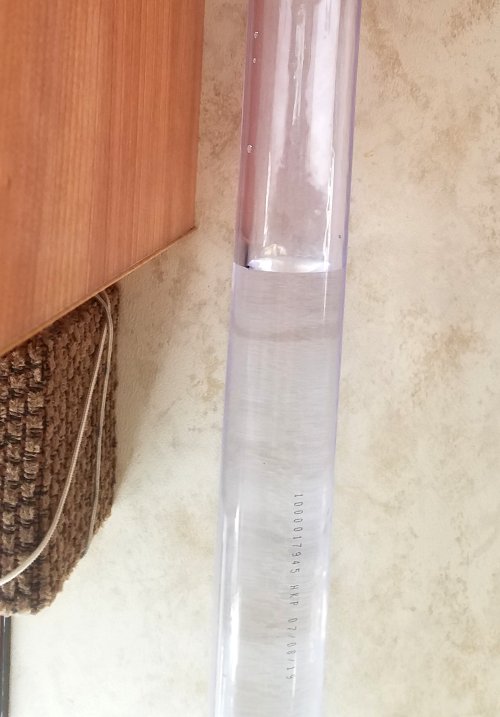 The water line is surprisingly easy to see.
The water line is surprisingly easy to see.
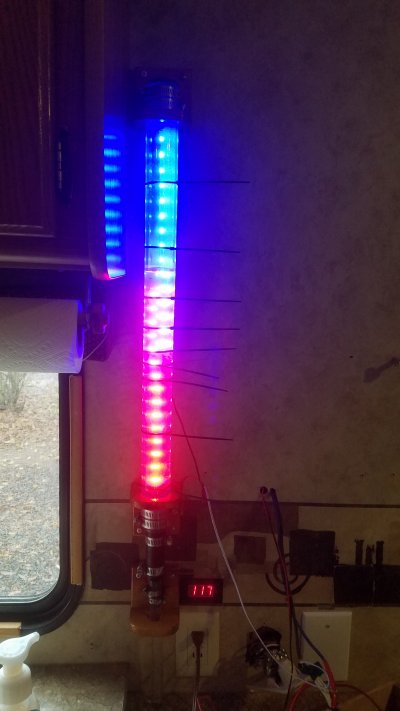
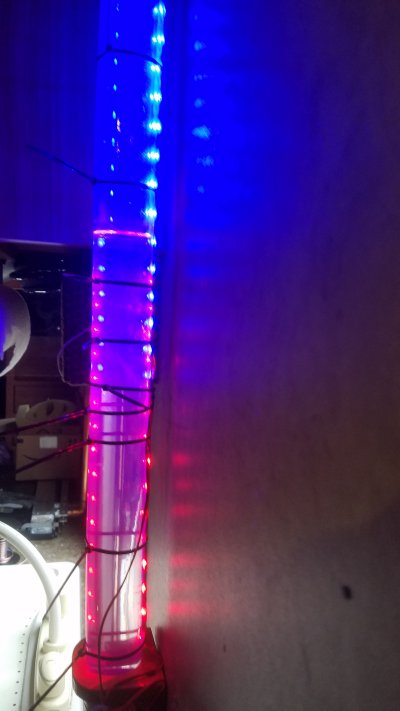
 The LEDs were too bright, almost blinding during the temporary test.
Actually, they are only too bright at night.
The night power is from the Coach DC Power.
So I installed a 100 ohm pot, a 50 ohm would have been better, to adjust the brightness to any value.
The pot is contained in the box to the right. I may make the adjustment accessable if it works OK.
One small problem is that with the pot the blue LEDs dim and go out before the RED.
So the Red LEDs are a little too bright, and the Blue a little too dim during the night.
The LEDs were too bright, almost blinding during the temporary test.
Actually, they are only too bright at night.
The night power is from the Coach DC Power.
So I installed a 100 ohm pot, a 50 ohm would have been better, to adjust the brightness to any value.
The pot is contained in the box to the right. I may make the adjustment accessable if it works OK.
One small problem is that with the pot the blue LEDs dim and go out before the RED.
So the Red LEDs are a little too bright, and the Blue a little too dim during the night.
|
The best reason to paint is that there is no reason to paint.
Keith Haring |
 Removed the blue LED strip from the back of the tube, and instead placed it on the wall.
Now both strips can be straight. I like this better...
Removed the blue LED strip from the back of the tube, and instead placed it on the wall.
Now both strips can be straight. I like this better...
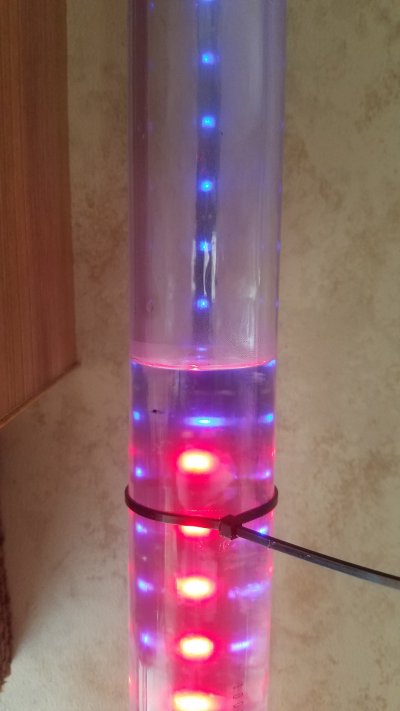 Toggled the switch to "night mode" which has the power from the Coach DC Supply.
The power is further reduced with an adjustable pot. The pot is adjusted for the blue LEDs to be almost out.
The best viewing of the water line is without any lights, as you can see. But this is not bad; A second best.
Toggled the switch to "night mode" which has the power from the Coach DC Supply.
The power is further reduced with an adjustable pot. The pot is adjusted for the blue LEDs to be almost out.
The best viewing of the water line is without any lights, as you can see. But this is not bad; A second best.